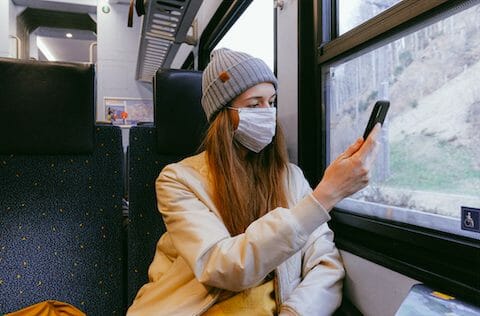As the coronavirus rapidly spreads through cities and communities across the U.S. and globally, some of the hardest-hit spots may be some of the most vulnerable.
Nursing homes and assisted-living facilities, many of which serve people with Alzheimer’s or dementia, are at high risk of being hotspots for COVID-19 outbreaks. Some 147 nursing homes in the U.S. already have confirmed coronavirus cases, according to a news release from the Centers for Medicare & Medicaid Services (CMS) sent out on Monday. That number is likely growing.
‘Ground Zero’ For Coronavirus
The pandemic’s entry into the U.S. sprouted at a long-term care facility.
Life Care Center, a long-term care center in Kirkland, Washington that provides skilled nursing and rehabilitation, made national headlines when dozens of residents tested positive for coronavirus and 35 people died. The center was linked to the subsequent rise of coronavirus cases in the state of Washington.
But experts believe Life Care Center won’t be the only long-term care site of coronavirus outbreaks. Public health officials are bracing for more facilities to be affected—and many are concerned about the already-vulnerable state of long-term care facilities that have historically struggled to contain infections and upkeep safety standards.
“The nursing home in Washington was the ground zero for the virus in this country, and we keep hearing more stories about more people dying, more people in [long-term care] facilities being infected,” Richard Mollot, Executive Director of the Long-Term Care Community Coalition in New York City, said in an interview with Being Patient.
“The most recent stories are about care staff causing infection,” Mollot continued. “We’re obviously concerned because the nursing home population is very vulnerable, and most are elderly. The majority of residents have some degree of cognitive impairment, and they need help with daily living.”
Standards For Many Long-Term Care Facilities Are Loose, Leaving Residents More Vulnerable to Infection
Public health officials who reviewed other long-term care facilities following the Life Care Center outbreak found that many weren’t adhering to safety practices, according to NBC News.
Many facilities didn’t have protective equipment for staff members or people who have fallen ill, like gloves, masks or gowns. Hand sanitizer was also lacking, and many staff members in these facilities weren’t taking precautions like avoiding touching their faces or following safety guidelines while in close contact with residents.
“The problem with the nursing homes is that [federal quality standards] are not enforced,” Mollot said. “Care tends to be very poor across the board. Infection was the number one citation in the last year. Staffing is low and insufficient in about three quarters of all nursing homes.
“This is the way the system has been carried out over the last decade, and even more so under the current administration, which is reducing oversight and accountability and leaving those residents vulnerable to coronavirus,” Mollot added.
Nursing homes are required to adhere to federal guidelines, even though many fall below the mark in sticking to them. But assisted-living facilities and the wide array of other long-term care facilities that don’t fall under the definition of a “nursing home” have no federal regulations.
States decide the regulations of those facilities instead, paving the way for much looser standards. This allows assisted-living facilities to avoid reporting data, and often results in them flying under the radar, Mollot says.
“Assisted-living has no federal quality standards whatsoever,” Mollot said. “There are no federal requirements in terms of staffing. At least at a nursing home, you have to have a nurse there. In the absence of a nurse, you have no one in the facility to provide people with an assessment if someone is getting sick. That’s pretty scary. That’s alarming.”
Assisted-living facilities are also more likely to house residents with dementia or Alzheimer’s. Many tend to retain residents they don’t have the ability to provide care for.
Many nursing homes and assisted-living facilities also already face high infection rates—a problem that preceded the coronavirus.
According to the CDC, some 4 million Americans reside in nursing homes and skilled nursing facilities each year. One million live in assisted-living facilities. Data from the CDC shows that one in three million serious infections happen in long-term care facilities each year.
“That’s something we’re seeing, and that’s being exacerbated with what’s happening with coronavirus,” Mollot said.
‘Immediate Jeopardy’
When the outbreak in the U.S. started, the CDC and other public health organizations released guidelines for nursing homes and assisted-living facilities to follow in order to prevent spread of coronavirus. Most of those guidelines focused on restricting all visitors from entering the buildings, except for end-of-life situations. All non-essential health care workers were also recommended to be restricted.
But the growing list of nursing home outbreaks, based on Monday’s data, is spurring public health officials at CMS to start a new focused inspection process. The new process integrates the center’s current infection control process but is ramping that up with added complaint inspections, targeted infection control inspections and self-assessments.
This would allow officials to target inspections to “Immediate Jeopardy” facilities—where residents or patients are considered to be in imminent danger.
“Immediate Jeopardy” could include things like failing to identify and manage sick residents. In the case of Life Care Center, staff failed to identify residents who were ill with coronavirus, they did not notify the Washington Department of Health and they did not have a backup plan when the facility’s main doctor became ill.
But even with increased inspections and guidelines, if residents in long-term care facilities can’t be rapidly and easily tested, it could be difficult to contain the spread.
“There are currently limited tests available, and we have heard about long-term care residents and staff getting declined when trying to be tested,” a spokesperson for American Health Care Association (AHCA) wrote in an email to Being Patient. “We need priority testing for our long-term care staff and residents.”
Staying Connected Amid Restrictions
The other challenge is helping residents—especially those with Alzheimer’s or other types of dementia—stay connected and socialize with others and family members during the time of restriction.
“Changing staff, changing protocols must be extremely alarming for people with dementia,” Mollot said. “We’re not in support of blockade of visitors, because facilities aren’t completely quarantined anyway—the staff is coming in and out.”
Mollot argues for a new protocol that would allow for more robust screening of staff members—many of whom leave the facility to work at other facilities and come back with no screening—to avoid further spreading.
He also believes allowing family members to visit residents—albeit with strict screening safety protocols in place—could help keep many residents, especially those with Alzheimer’s and dementia, in a better emotional and mental state.
Dorothy Colby is the Director of Community Engagement at Hale Kuike, a group of adult residential care homes in Hawai’i.
“The immediate planning is how do we reduce the risk that we can right now and keep our residents engaged,” Colby said.
Colby said that while the homes have restricted visitors and are screening staff, they can’t self-isolate the residents as of now. “They are still doing activities together because they are people with dementia,” Colby said.
She says another way to ensure smoother operations during a time of restriction is to invest in communicating with family members.
“We have a pretty rich communications system with our families in regular times,” Colby said. “We have a mass email and emergency management texting service, we’ve been keeping families in touch and encouraging them to send physical and virtual mail, to upload videos and files to show their loved ones. We’re starting a support group for families this Saturday.”
Hale Kuike, like many other long-term care facilities now, is also scrambling to figure out a plan if and when a coronavirus case arrives.
“We’re setting up an isolation wing with drapes and cutting it off from the rest of the facility,” Colby said. “Things are still changing, so we’re in the midst of working out all the details. But we have set up the space and we will be communicating with families about what we’re going to do if a case arises.”





